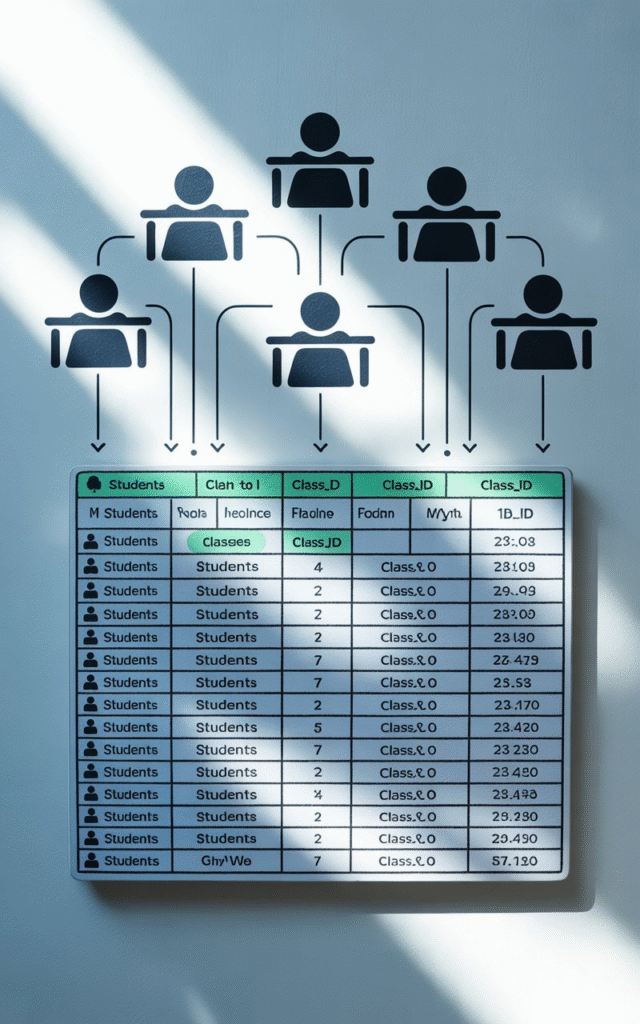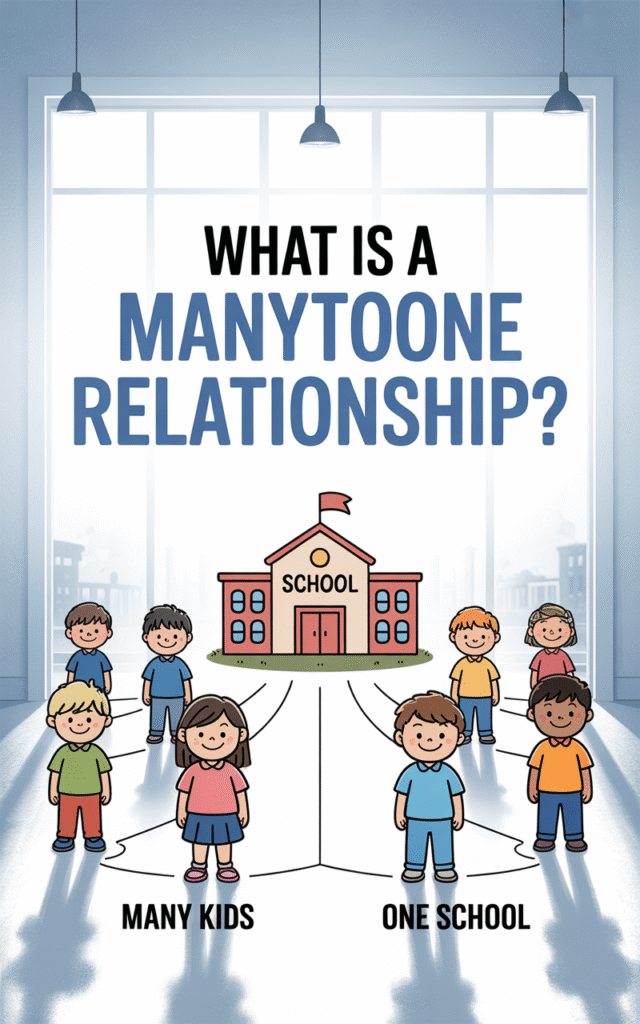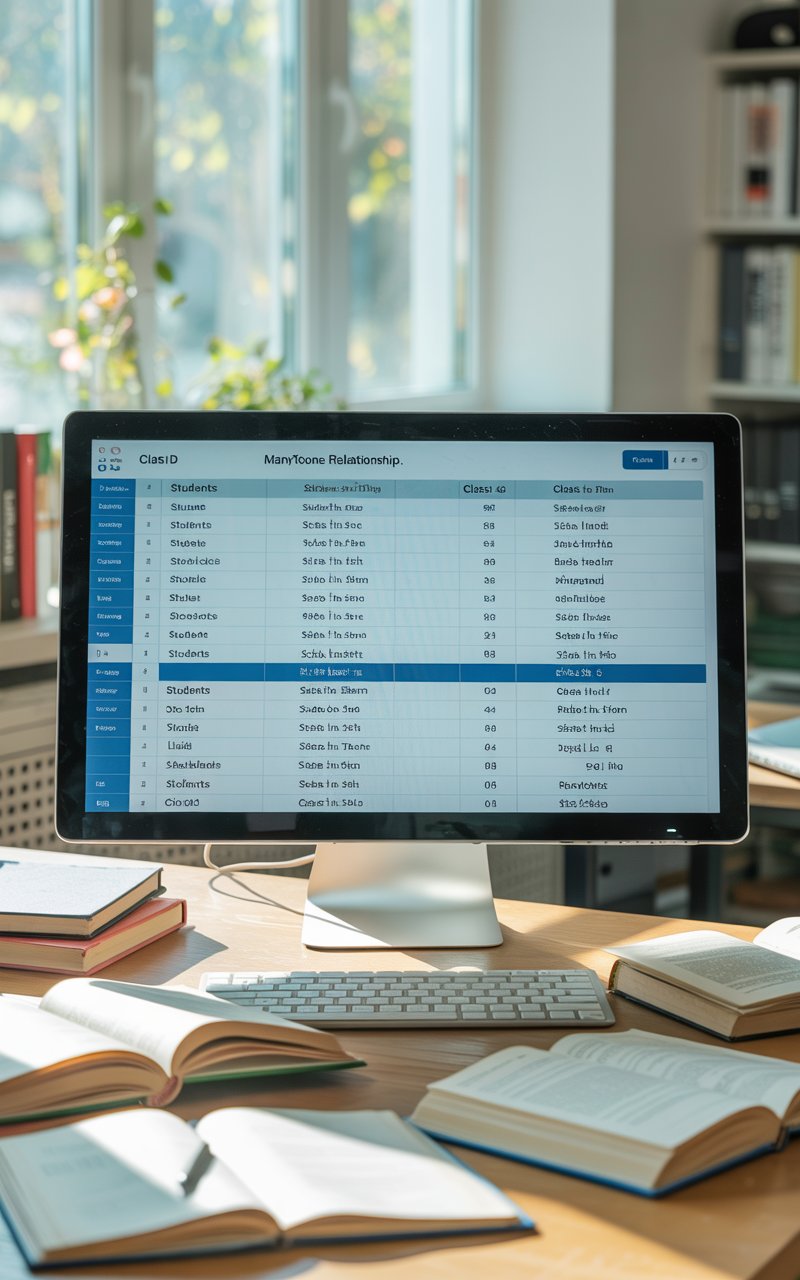A manytoone relationship happens when many items connect to just one item in another group. You can see this in real life and in computers, especially in databases. For example, many kids go to one school, but each kid only goes to one school. That is a simple way to understand a manytoone relationship. This idea is used to keep things neat and tidy when we work with lots of information in tables. It’s like saying many rows in one table are linked to just one row in another table.
If you are learning about data, coding, or making websites, you need to know about the manytoone relationship. It’s a basic but important rule. It helps us keep data clean and organized. When we use this in database design, it makes things easier. It also helps computer systems work faster and better. Let’s break it down step by step in this blog post.
In a database, a manytoone relationship is when several records in one table are linked to just one record in another table. Think about a school again—many students are in one class, but each student is only in one class. In the world of data, this means the student table will have a column (like “class_id”) that connects back to the class table. This helps the computer know which student belongs to which class. We call this column a foreign key, and it is the bridge that connects both tables. Without it, things would get messy.
Using a manytoone relationship also saves time. We don’t have to repeat the same class name for every student. Instead, we keep it in one place and connect it. This is great for storing big data and makes searching for answers faster. You will see this setup in many places—like in stores, apps, or websites—because it works so well. Now, let’s explore more about how this works and why it’s so useful.
Table of Contents
Understanding the Manytoone Relationship With Easy Examples
A manytoone relationship is when many items are linked to just one item in another group. Think of it like this: many students go to one school. Each student belongs to one school only, but the school has many students. This is a simple example of how a manytoone relationship works in real life. It helps organize things better. In computers and databases, we use this to keep our data clean. If we put everything in one big table, it becomes messy. So, we use two tables and link them using a special key. That’s how we tell the computer which items belong together. This method makes storing and finding data easier, faster, and smarter.
Why the Manytoone Relationship Is Used in Databases
Databases are used to store lots of information. When we use a manytoone relationship, it helps us keep this data neat and tidy. Instead of writing the same details again and again, we connect the data using a special link. For example, many orders can belong to one customer. If we wrote the customer’s name with every order, it would be repeated many times. But with a manytoone relationship, we just link the customer to the orders once. This saves space and helps the computer work faster. It also makes it easy to update details. If something changes, we only need to fix it in one place. That’s why it’s a smart way to manage data.
Real-Life Examples of Manytoone Relationships You See Every Day

Manytoone relationships are all around us. Think about teachers and classes—many students are in one class, but each student is only in one class. That’s a manytoone relationship. Another example is books in a library. Many books can be written by the same author, but each book has only one author listed. In stores, many items can be sold by one seller, but each item belongs to just one seller. These simple ideas show how we use manytoone relationships in real life. They help us sort things, find information quickly, and keep things organized. We use these relationships in apps, websites, schools, and shops without even thinking about it.
How to Set Up a Manytoone Relationship in a Simple Database
Setting up a manytoone relationship in a database is not hard. First, you need two tables. One table is for the many items, and the other is for the one item they all connect to. For example, you can have a “students” table and a “schools” table. Each student belongs to one school, so in the “students” table, we add a column called “school_id.” This column links to the school’s ID in the “schools” table. This link is called a foreign key. It tells the database how the two tables are connected. With this setup, we can find all students in a school or see which school a student goes to.
Manytoone Relationship vs One-to-Many: What’s the Difference?
The manytoone relationship and one-to-many relationship may sound different, but they are actually the same idea seen from two sides. If we say many students go to one school, that’s manytoone. But if we look at it the other way and say one school has many students, that’s one-to-many. It’s just about which side you are looking at. The structure in the database is the same. You still have two tables, and one side has the key that connects it to the other. The names sound different, but they do the same job—keeping data clean and connected. It’s like looking at the same picture from different sides.
Common Problems With Manytoone Relationships and Easy Fixes
Sometimes, manytoone relationships can have small problems. One common issue is missing data. If the table doesn’t have the correct foreign key, the link breaks, and the database doesn’t know how things are connected. Another problem is when people enter wrong data, like using a school ID that doesn’t exist. To fix this, we must use rules that stop bad data from being added. We can also use software tools to check for mistakes. Keeping the data clean and using clear links between tables helps avoid these issues. With a little care, manytoone relationships can work smoothly and make managing data easy.
Best Practices When Using Manytoone Relationships in Your Projects
To use manytoone relationships well, always plan your tables before you start. Think about how the data connects. Keep one table for the main items and the other for the details. Use foreign keys to link them. Make sure the values match so the connection works. Try not to repeat data in both tables. Keep it clean and simple. Always test your database to make sure the links work. It’s also smart to write down how your tables are connected so others can understand. These steps will help your project stay tidy, fast, and easy to fix if something goes wrong later.
Manytoone Relationship in SQL: A Kid-Friendly Guide
In SQL, we use manytoone relationships by linking tables with foreign keys. Let’s say you have a “students” table and a “schools” table. First, you create both tables. Then, in the “students” table, you add a column like “school_id” that matches the “id” in the “schools” table. When you write your SQL code, you can use “FOREIGN KEY” to make the link. This tells the computer how the two tables are connected. Later, when you search for all students in a school, the database knows where to look. SQL makes it easy to use manytoone relationships to keep your data smart and simple.
When Not to Use a Manytoone Relationship and What to Do Instead

Sometimes, a manytoone relationship is not the best choice. If your data needs many connections on both sides, like many teachers teaching many students, then you need a different setup. That’s called a many-to-many relationship. In this case, using a manytoone structure won’t work well and can cause confusion. You may also run into trouble if your data changes too much or doesn’t stay linked properly. Instead, you should use a third table to handle the links. This table keeps track of both sides and connects them clearly. Knowing when to use or avoid manytoone helps make better databases.
Why Every Beginner Should Learn About Manytoone Relationships First
If you’re new to databases, the manytoone relationship is one of the best places to start. It’s simple, useful, and shows you how data fits together. Many real-life examples help you understand it fast. When you learn this, you also learn about foreign keys, table links, and how data moves. This makes learning more complex database topics easier later on. Beginners who understand manytoone relationships can build better projects, apps, and websites. It’s a great way to practice thinking about how information connects. So, if you’re starting your journey in data or coding, begin with this—you’ll be glad you did!
Conclusion
Learning about a manytoone relationship is a great way to understand how things are linked in real life and in databases. It shows us how many items can belong to just one item, like many kids going to one school. This makes data clean, easy to find, and simple to use.
Using a manytoone relationship helps you build smart apps, websites, or school projects. It keeps your work tidy and fast. Once you know this, you can do even more cool things with data. So always remember this rule—it’s small but super helpful!
FAQs
Q: Can I use a manytoone relationship in SQL?
A: Yes! You can use foreign keys in SQL to connect tables using a manytoone relationship.
Q: Why is the manytoone relationship important in databases?
A: It helps keep data clean and makes it easy to find and change things without mistakes.
Q: What is a manytoone relationship?
A: A manytoone relationship is when many items connect to just one item, like many kids going to one school.

